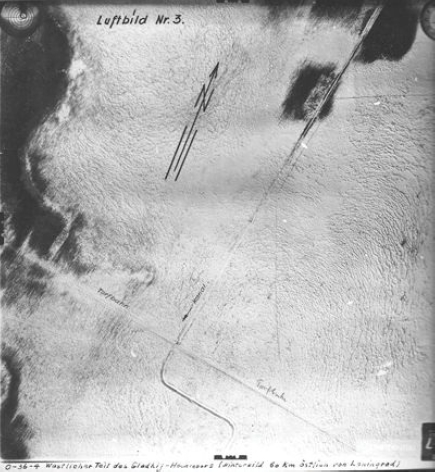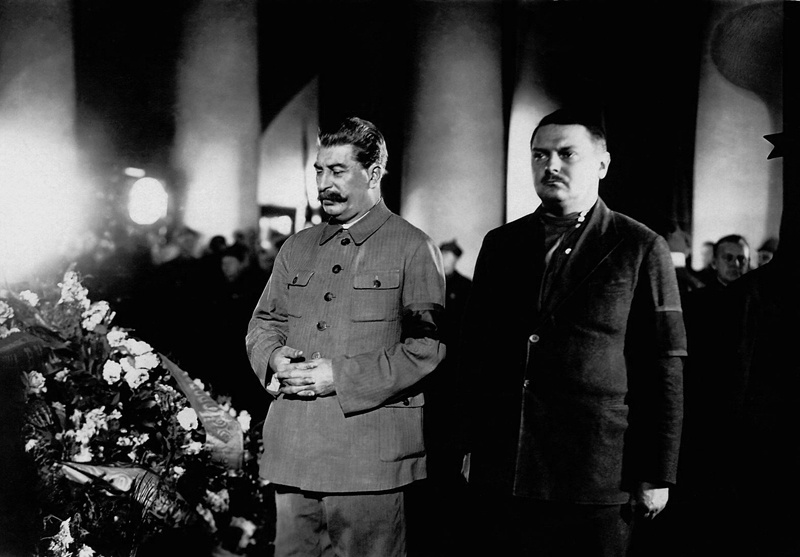|
Road Of Life
The Road of Life () was the set of ice road transport routes across Lake Ladoga to Leningrad during the Second World War. They were the only Soviet winter surface routes into the city while it was besieged by the German Army Group North under ''Feldmarschall'' Wilhelm Ritter von Leeb. The routes operated in the winters of 1941-1942 and 1942-1943. Construction and operation were performed under German artillery and aerial bombardment. In January 1943 the Soviet's Operation Iskra broke the encirclement, and the ice roads were used in conjunction with land routes for the remainder of the winter. The routes carried supplies necessary to sustain life and resistance inside the Leningrad pocket, and evacuated non-combatants, wounded, and industrial equipment. Over 1.3 million people, primarily women and children, were evacuated over the roads during the siege . The Road of Life is now a World Heritage Site. History The blockade forms On 8 September 1941, Army Group North captured ... [...More Info...] [...Related Items...] OR: [Wikipedia] [Google] [Baidu] |
Sinyavino Offensive
The Sinyavino offensives were a serie of Soviet offensives in 1941–1943 during World War II around the Sinyavino Heights, east of Leningrad, to lift the Siege of Leningrad. The area was only fully liberated during the Leningrad–Novgorod offensive in January 1944. List of battles First Sinyavino offensive (1941) The first Sinyavino offensive was a Soviet counterattack during the German Encirclement of Leningrad between 10 and 26 September 1941. It was executed by the 54th Army which attacked from the east and by the Leningrad Front's 115th Rifle Division and 4th Marines Brigade which attacked from the region of Nevskaya Dubrovka in Leningrad. The 54th Army Detachment advanced some 6-10 km, but was then surrounded and nearly entirely destroyed. The Leningrad Front troops made a forced crossing over the Neva River and occupied the Neva Bridgehead, but failed to advance any further. The Commander of the 54th Army, Marshal Grigory Kulik was relieved of command for the fail ... [...More Info...] [...Related Items...] OR: [Wikipedia] [Google] [Baidu] |
Alexei Kosygin
Alexei Nikolayevich Kosygin ( rus, Алексе́й Никола́евич Косы́гин, p=ɐlʲɪkˈsʲej nʲɪkɐˈla(j)ɪvʲɪtɕ kɐˈsɨɡʲɪn; – 18 December 1980) was a Soviet statesman during the Cold War. He served as the Premier of the Soviet Union from 1964 to 1980 and was one of the most influential Soviet policymakers in the mid-1960s along with General Secretary Leonid Brezhnev. Kosygin was born in the city of Saint Petersburg in 1904 to a Russian working-class family. He was conscripted into the labour army during the Russian Civil War, and after the Red Army's demobilization in 1921, he worked in Siberia as an industrial manager. Kosygin returned to Leningrad in the early 1930s and worked his way up the Soviet hierarchy. During the Great Patriotic War (World War II), Kosygin was a member of the State Defence Committee and was tasked with moving Soviet industry out of territories soon to be overrun by the German Army. He served as Minister of Finance for ... [...More Info...] [...Related Items...] OR: [Wikipedia] [Google] [Baidu] |
Alexey Kuznetsov
Alexey Alexandrovich Kuznetsov (, in Borovichi – 1 October 1950, in Moscow) was a Soviet statesman, CPSU (since 1925) functionary, Lieutenant General, member of CPSU Central Committee (1939-1949). He was Second Secretary (deputy leader) to Leningrad CPSU ''gorkom'' (city committee) and ''obkom'' (oblast committee), and, during the Siege of Leningrad, helped organize the city's defense. For his work during the siege, he was promoted to First Secretary in 1945. Zhdanov was thought to want Kuznetsov to replace him as CC Party Chairman. Kuznetsov was also believed to be a possible replacement for Stalin on the latter's death. He was a strong supporter of Stalin, who appointed him to head the security functions of the party, showing how much the Soviet leader trusted him. The beginning of Kuznetsov’s fall came when Stalin demoted him and returned him to a minor post in Leningrad (a frequent sign that the subject was destined for a final fall). This may have been because Kuznet ... [...More Info...] [...Related Items...] OR: [Wikipedia] [Google] [Baidu] |
Communist Party Of The Soviet Union
"Hymn of the Bolshevik Party" , headquarters = 4 Staraya Square, Moscow , general_secretary = Vladimir Lenin (first) Mikhail Gorbachev (last) , founded = , banned = , founder = Vladimir Lenin , newspaper = ''Pravda'' , position = Far-left , international = , religion = State Atheism , predecessor = Bolshevik faction of the RSDLP , successor = UCP–CPSU , youth_wing = Little Octobrists Komsomol , wing1 = Young Pioneers , wing1_title = Pioneer wing , affiliation1_title = , affiliation1 = Bloc of Communists and Non-Partisans (1936–1991) , membership = 19,487,822 (early 1989 ) , ideology = , colours = Red , country = the Soviet Union The Communist Party of the Soviet Union (CPSU),; abbreviated in Russian as or also known by various other names during its history, was the founding and ruling party of the Soviet Union. Th ... [...More Info...] [...Related Items...] OR: [Wikipedia] [Google] [Baidu] |
Andrei Zhdanov
Andrei Aleksandrovich Zhdanov ( rus, Андре́й Алекса́ндрович Жда́нов, p=ɐnˈdrej ɐlʲɪˈksandrəvʲɪtɕ ˈʐdanəf, links=yes; – 31 August 1948) was a Soviet politician and cultural ideologist. After World War II, Zhdanov was thought to be the successor-in-waiting to Joseph Stalin but died before him. He has been described as the "propagandist-in-chief" of the Soviet Union from 1945 to 1948.V. M. Zubok and Konstantin Pleshakov. Inside the Kremlin's Cold War: from Stalin to Khrushchev. Harvard: Harvard UP, 1996, p.119 Early life Zhdanov was born in Mariupol (now Ukraine), where his father was a school inspector. His maternal grandfather was the former rector of the Moscow Theological Academy. He studied at the Moscow Commercial Institute. In 1914, he was drafted into the Russian army, graduated from an officers' school and served in the reserves. He joined the Bolsheviks in 1915. In 1917, he was chairman of the Shadrinsk committee of the Bols ... [...More Info...] [...Related Items...] OR: [Wikipedia] [Google] [Baidu] |
Rear Of The Russian Armed Forces
The Rear of the Armed Forces of the Russian Federation (RAF-RF) (russian: Тыл Вооружëнных Сил Российской Федерации, Tyl Vooruzhonnykh Sil Rossiyskoy Federatsii), often referred to in English as the ''rear services'', was an organization of support services for the Russian Armed Forces until 2010 when it was transformed into Logistical Support of the Russian Armed Forces. The Rear of the Armed Forces included an unusually diverse range of services, for example medical services, firefighters, logistical services, economic analysts, scientific units, and combat-ready formations for maintaining and protecting rear installations such as pipelines and railways. The Rear also had its own central staff organization. In addition to the centrally controlled Rear of the Armed Forces, there were also separate rear services for each armed service, e.g. the Rear of the Soviet Ground Forces, Rear of the Strategic Rocket Forces, etc. In principle, these rear or ... [...More Info...] [...Related Items...] OR: [Wikipedia] [Google] [Baidu] |
Andrey Khrulyov
General Andrei Vasilyevich Khrulyov (russian: Андрей Васильевич Хрулёв) (, village of Bolshaya Alexandrovka, Saint Petersburg Governorate - June 9, 1962, Moscow) was a Soviet military commander and politician. Early life Andrey Khrulyov was born in the village of Bolshaya Aleksandrovka, the son of Vasily Vasilyevich Khrulev, a blacksmith’s striker, and Maria Ivanovna, a peasant. He apprenticed to a goldsmith (1903–1912). At some point, he became a revolutionary, for which he was exiled to Estonia (1912–1914). Career Joining the Red Army in 1918 during the Russian Civil War, Khrulyov first served first in Petrograd, and during 1919–1921 as a political commissar in the 11th cavalry division of Budenny's First Cavalry Army. After the war, he remained in military service, and began developing a more sophisticated logistical system for the Red Army, which became the Rear of the Soviet Armed Forces. Khrulev was Head of Main Intendant Directorate of th ... [...More Info...] [...Related Items...] OR: [Wikipedia] [Google] [Baidu] |
Joseph Stalin
Joseph Vissarionovich Stalin (born Ioseb Besarionis dze Jughashvili; – 5 March 1953) was a Georgian revolutionary and Soviet political leader who led the Soviet Union from 1924 until his death in 1953. He held power as General Secretary of the Communist Party of the Soviet Union (1922–1952) and Chairman of the Council of Ministers of the Soviet Union (1941–1953). Initially governing the country as part of a collective leadership, he consolidated power to become a dictator by the 1930s. Ideologically adhering to the Leninist interpretation of Marxism, he formalised these ideas as Marxism–Leninism, while his own policies are called Stalinism. Born to a poor family in Gori in the Russian Empire (now Georgia), Stalin attended the Tbilisi Spiritual Seminary before joining the Marxist Russian Social Democratic Labour Party. He edited the party's newspaper, ''Pravda'', and raised funds for Vladimir Lenin's Bolshevik faction via robberies, kidnappings and protection ... [...More Info...] [...Related Items...] OR: [Wikipedia] [Google] [Baidu] |
State Defense Committee
The State Defense Committee (russian: Государственный комитет обороны - ГКО, translit=Gosudarstvennyĭ komitet oborony - GKO) was an extraordinary organ of state power in the USSR during the German-Soviet War (Great Patriotic War) which held complete state power in the country. General scope The Soviets set up the GKO on 30 June 1941 (a week after Nazi Germany invaded the Soviet Union on 22 June 1941) by a compound decision of the Presidium of the Supreme Soviet of the USSR, the Council of People's Commissars (''Sovnarkom''), and the Central Committee of the Communist Party of the Soviet Union. The war situation at the front lines required a more centralized form of government. The Supreme Soviet, however, continued unsuspended. On 18 June 1942 over a thousand members attended the 9th session of the Supreme Soviet in Moscow. Geoffrey Roberts sees the GKO as "a sort of war cabinet". Composition The initial composition of the committee was such ... [...More Info...] [...Related Items...] OR: [Wikipedia] [Google] [Baidu] |
Sleigh
A sled, skid, sledge, or sleigh is a land vehicle that slides across a surface, usually of ice or snow. It is built with either a smooth underside or a separate body supported by two or more smooth, relatively narrow, longitudinal runners similar in principle to skis. This reduces the amount of friction, which helps to carry heavy loads. Some designs are used to transport passengers or cargo across relatively level ground. Others are designed to go downhill for recreation, particularly by children, or competition. (Compare cross-country skiing with its downhill cousin.) Shades of meaning differentiating the three terms often reflect regional variations depending on historical uses and prevailing climate. In British English, ''sledge'' is the general term, and more common than ''sled''. ''Toboggan'' is sometimes used synonymously with ''sledge'' but more often to refer to a particular type of sledge without runners. ''Sleigh'' refers to a moderate to large-sized, usually ... [...More Info...] [...Related Items...] OR: [Wikipedia] [Google] [Baidu] |
Stavka
The ''Stavka'' (Russian and Ukrainian: Ставка) is a name of the high command of the armed forces formerly in the Russian Empire, Soviet Union and currently in Ukraine. In Imperial Russia ''Stavka'' referred to the administrative staff, and to the General Headquarters in the late 19th-century Imperial Russian armed forces and subsequently in the Soviet Union. In Western literature it is sometimes written in uppercase (''STAVKA''), although whether it is an acronym is a subject of debate. ''Stavka'' may refer to its members, as well as to the headquarters location (its original meaning from the old Russian word ''ставка'', 'tent'). Stavka of the Supreme Commander during World War I The commander-in-chief of the Russian army at the beginning of World War I was Grand Duke Nicholas Nicholaievitch, a grandson of Tsar Nicholas I. Appointed at the last minute in August 1914, he played no part in formulating the military plans in use at the beginning of the war. Nik ... [...More Info...] [...Related Items...] OR: [Wikipedia] [Google] [Baidu] |

.jpg)






